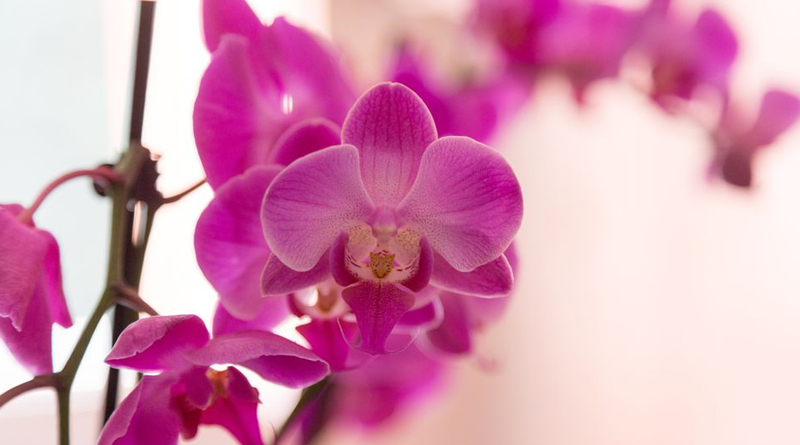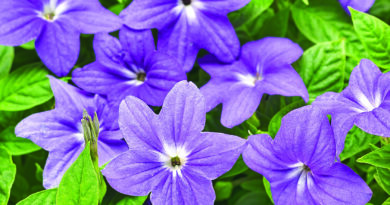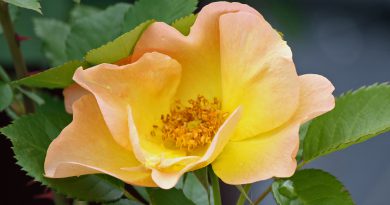Growing Orchids in your Home
Growing orchids should be easy. They are a very forgiving plant if you understand it.
Sadly, most are drowned by over solicitous caregivers who believe that “life in the jungle” indicates a preference for humidity and that this means orchids need a lot of water. New orchid owners often intuit that because orchids are tropical they also need a lot of heat and sunlight.
While it is true that some orchids do grow in rain forests, some also grow in deserts. Most of the tropical varieties we grow are epiphytes, meaning they grow above the ground, using their roots to hold onto tree branches. Obviously, drainage is going to be paramount.
It is important to know where your orchid came from and then try to emulate natural conditions.
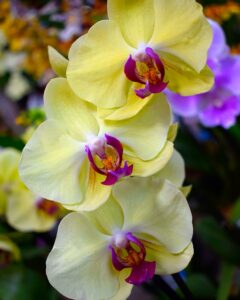
Most of the orchids popularly grown here are Dendrobiums or Phalaenopsis. Both types sold here are from forests in Asia; dendrobiums come from as far north as Japan to New Guinea, Australia, New Zealand and South East Asia and phalaenopsis from the tropical regions of Asia. They both put out magnificent sprays of lovely flowers.
Phalaenopsis flowers emerge from a cluster of big, fleshy, paddle-like leaves at the base of the plant. Debrobiums have smaller leaves that grow along the main stem with the flower emerging from the top.
The phalaenopsis flowers look like small moths to some people and these plants are often called “moth orchids”. The dendrobium flowers look like little butterflies perching on a wire. Both can bloom for months under the right conditions, but generally bloom six to eight weeks.
You will usually find dendrobiums in very small pots, totally out of proportion to the length of the stems and the large spray of flowers. Don’t fret — they like it like that. Dendrobiums grow from a bulb where they store water and nutrients. Both of these orchids send out air roots which will eventually escape the pots they are in. Eventually, they will need to be moved to larger quarters.
Contrary to our intuition, these orchids need to almost dry out between waterings — the potting medium should be dry to the touch at the surface but just a little humid if you explore further.
You can help meet humidity needs, if your house is very dry in winter, by setting the plants on a tray of pebbles filled with water.
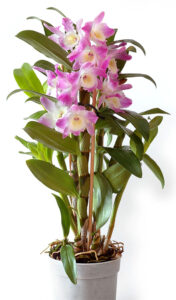
Orchids like bright light but not direct sunlight, although a couple of hours of morning sun in an east-facing window will be enjoyed. Dendrobiums like it cool. Temperatures should be kept between 12 C and 15 C at night and 18 C and 24 C during the day. Placing the plant on an east-facing windowsill should do the trick of lowering the temperature overnight as the air will be cooler by the window.
Most growers advise feeding weekly at one-quarter strength (although feeding is not imperative) and don’t feed from late fall until the days begin to lengthen in mid-February. Remember, without enough light plants can’t use the fertilizer, and deadly salts can build up in the potting medium.
Orchid roots needs a lot of air, which is why they are sold in slotted pots. Water at the sink and let tepid water run right through the pot and see that they are thoroughly drained before putting back in a drop tray.
Phalaenopsis are the most common of the orchids in most homes. Their flowers have a more rounded form than the dendrobiums, but otherwise they are superficially very much alike, except as noted above, in the placement and shape of their leaves. Their care is very similar to that of dendrobiums, although phalaenopsis can take marginally warmer temperatures to 28 C in the daytime, but out of the sun. Phalaenopsis does not grow from a pseudo bulb or a rhizome as the dendrobium does.
The phalaenopsis flower spike emerges from between the leaves and, when blooming is over, you can cut the spike back to just about a half inch above a node to encourage a branching spike to grow.
In nature. these orchids grow on trees with their roots exposed to the rain, so the way we grow them is actually upside down. This means that they need staking. k



